Of the many cheerful transformations that the summer sun brings with herself, the jolliest one is the colourful transformation our wardrobes undergo.
Warm, thick outfits are replaced by light, flowy fabrics; winter-wear is replaced by summary sundresses and organic weaves, and comfortable handmade fabrics invariably take centre stage.
There is something about handwoven fabrics that naturally draws us in; something about their closeness to nature, their soft organic feel against the skin, their breathable texture, and the fact that they’re made ever so sustainably…
Handwoven fabrics are made using handlooms; handlooms neither require electricity to run nor do they emit pollution. The benefit of not using any automation is that weavers are able to reduce material wastage at many stages along the way, thereby engaging in sustainable practices.
Today, sustainable weaving processes are making a rapid comeback. This is because these weaving practices play a large role in preserving the environment by using natural energy sources, reducing material and energy wastage, and using significantly less water. When artisans work with handwoven fabrics, they wash these fabrics in local waterways and dry them in the sun, just like old times.
The origin of handwoven fabrics…
When the archaeological sites of Mohenjo-Daro were excavated, the world received in-depth insights into the Indus Valley Civilisation, its early settlers, their lives, and most importantly, their arcane yet ingenious technologies. Among these, archaeologists found ancient remnants and evidence of cotton and silk, too; indicating how far back the practices of handweaving textiles goes.
Sir Marc Aurel Stein, British/Hungarian archaeologist, ethnographer, geographer and linguist, conducted many expeditions through India, Iran, and Central Asia in the early to mid-1900s. Among the various artefacts and sites he discovered, were numerous early textiles — embroidered, printed, and handwoven! In the ice waters of Central Asia, Sir Marc Aurel Stein also found fabric with Indian floral prints dating back to the 18th century AD.
Discoveries such as these indicate that of all the Indian arts and crafts, traditional handloom textiles are among the oldest.
Handwoven fabrics and the price dilemma
Garments made using handwoven fabrics often appear seemingly exorbitant to end-users; however, textile connoisseurs continue to willingly invest large amounts of money in organic, handwoven fabrics for several reasons.
Those who truly appreciate traditional, sustainable weaves understand that sourcing the right materials that are long-lasting is a tedious task that needs to be handled with painstaking attention to detail. Then there’s the matter of finding handlooms that practice ethical, inclusive processes, hire skilled local workers, pay them fair wages, and care for the well-being of the artisans as well as their art.
These factors contribute to increasing the cost of handwoven fabrics. Because high-quality fabrics are more expensive, end-users naturally expect finished products of a higher standard than regular garments and tapestry. To accomplish this, designers and artisans invest days together of attention and effort behind finishing each garment.
Popular handwoven fabrics
Popular for numerous reasons, cotton is a natural, breathable fibre that is hypoallergenic (does not cause allergies) and easy to work with. Because it is breathable, cotton does not trap heat, and it allows moisture to evaporate freely. This keeps cotton odour-free, especially when compared to synthetic fabrics.
This quality of cotton allows users to wash cotton garments less frequently than other materials, thus saving water and energy, and slowing down wear-and-tear. In spite of being soft and comfortable, cotton is very strong and can be made into washable, durable fabrics of varying weights.
Cotton is among the most commonly used fabrics in the world, owing to its ease of use and the comfort it provides. Cotton is chemically organic, meaning, it does not contain any synthetic compounds. This fabric is derived from cotton fibres surrounding cotton pods in fluffy, round formations. At the centre of each cotton pod lies a cotton seed, ready to be replanted or crushed to extract cottonseed oil.
Because cotton is a natural fibre, it is ideal for the sweltering Indian summer and very popular across the South Asian subcontinent. Cotton fabrics have a fairly loose weave when they’re handwoven, allowing for easy air circulation and preventing heat rashes caused by synthetics. All in all, wearing cotton makes the heat more bearable.
Benefits of cotton
- Controls moisture
- Provides insulation against external heat
- Keeps the wearer cool and comfortable
- Allows the skin to breathe
- Cotton is hypoallergenic
- Durable and weatherproof
- Easy to wash
Linen
Linen is an organic fabric made from the fibres of the flax plant. The flax plant today is also very famous for flax seeds, which are considered a superfood by many. Best described as cotton’s close cousin, linen is strong, absorbent, and quick-drying. It dries even faster than cotton.
While it is very comfortable to wear in hot weather, linen has this distinctive property that makes it wrinkle easily. Archaeologists research suggests that linen may have been around for a very long time. The first evidence of handwoven linen fabrics may date back to Mesopotamia and ancient Egypt.
Sometimes textiles made of cotton, hemp, and other non-flax fibres are also loosely termed as ‘linen’ if they have a linen-like weave texture.
It is believed that the French word lingerie, may be derived from linen because linen was often used to make undergarments or innerwear. Apart from being a natural fibre, the light weave makes of linen makes it a very breathable fabric.
Benefits of linen
- Keeps the wearer cool
- Absorbs perspiration and moisture
- Gains strength when wet; very useful as a wrap
- Uses natural dyes in its organic form
- Suitable for every season
- Comfortable, lightweight, and breathable
is a hand-woven natural fibre that originated in and around the eastern and north-eastern parts of India. Today is used in many parts of the world. is essentially made out of cotton, and gained popularity when Mahatma Gandhi urged Indians to use handwoven fabrics to oppose the colonial rule of that time.
may sometimes include silk or wool, too, apart from cotton. This fabric is spun on a traditional Indian spinning wheel known as a charkha.
Benefits of
- The weave allows the skin to breathe easily.
- Durable, high-quality fabric
- Has a long life
- By wearing you support skilled rural artisans
- Spinning is a labour-intensive and time-consuming art; using gives employment to artisans
Organic cotton
Organic cotton is the epitome of sustainability when it comes to textiles. Organic cotton farmers cultivate a product that preserves the health of their farmlands, protects the soil, uses water judiciously, and keeps the air clean. Organic cotton farmers use no pesticides and no artificial fertilisers in the process of growing organic cotton. This keeps the air, soil, and water in the area completely natural and healthy. These organic cotton growers use non-GMO seeds that are completely natural.
Benefits of Organic Cotton
- Grown using non-toxic substances
- Safe for children and those with sensitive skin
- Keeps the soil healthy
- Uses 88% less water, 62% less energy as compared to conventional cotton
- Less impact on air
Organic fabrics and their end products
Organic fabrics are best known these days for their utility in making organic garments or organic clothes, and organic tapestry. ‘Organic clothing’ refers to all those clothes that are made from fabric that has been grown safely, processed without toxic dyes and substances, and isn’t treated using synthetic chemicals. Because synthetic chemicals negatively impact life at every stage of the supply chain and product life cycle, replacing conventional synthetic clothing with organic clothing is a healthier life choice. Wearing organic clothes prevents pesticides, dyes, and other harmful residues of the garment from affecting your parents, children, pets, and yourself. The use of chemicals and synthetic materials has affected all the way to the end of the supply chain. Studies have suggested that fabric with traces of agricultural pesticides, and the plastic in synthetic fabrics can be potential triggers for food allergies, obesity, and Alzheimer’s disease.
The end product of organic fabrics, i.e. organic clothing is gentle, safe, and pretty much harmless.
Pigments or colourants derived from plants, invertebrate animals, rocks, resins, and minerals are known as natural dyes or natural colours. To use natural colours for dying, the natural pigment is mixed into a large pot of water and heated to extract the dye compounds into the water. Textiles are then submerged in the dye solution and held at heat until the desired colour is achieved.
Benefits of natural dyes
- Biodegradable, non-toxic and non-allergic
- Without health hazards
- Negligible environmental concerns
- Produce soft, lustrous colours in soothing shades
In the twentieth century, synthetic fabrics such as polyesters and polyester-blends, among other artificial materials gained immense popularity because of their ability to remain wrinkle-free even after prolonged usage.
These materials were easy to mass-produce and came pretty cheap after the industrial revolution.
However, they came with their downsides. These synthetic fabrics were very useful but full of harmful chemicals that were bad for children, adults, and pets alike. They were dyed using synthetic pigments, which too, were equally harmful health hazards. The entire process of manufacturing and disposing of these fabrics was environmentally harmful and continue to be. Because such fabrics aren’t breathable, they cause rashes, allergies, and other skin problems, especially in hot and humid climates such as those in Japan and India. In such countries, natural fibres continued to rule the roost in spite of infiltration by synthetic materials.
Today, those at the forefront of the fashion industry are more aware and concerned about major environmental issues such as climate change, plastic pollution, deforestation, loss of biodiversity, destruction of coral reefs, and water scarcity. The production of garments and manufacturing of fast fashion is a major contributor to this lasting environmental damage. Concerned fashion houses are doing their best to transition towards sustainable fashion, but this might take a while.
Smaller designers and manufacturers who believe in and uphold the slow fashion movement are actively giving up synthetic fabrics and replacing them with organic fabrics. Those who believe in a sustainable fashion are even building entire businesses only around organic materials. They’re providing employment to highly skilled yet undervalued artisans; they’re reviving lost textiles.
Thus, they’re preserving age-old weaving and dying techniques.

